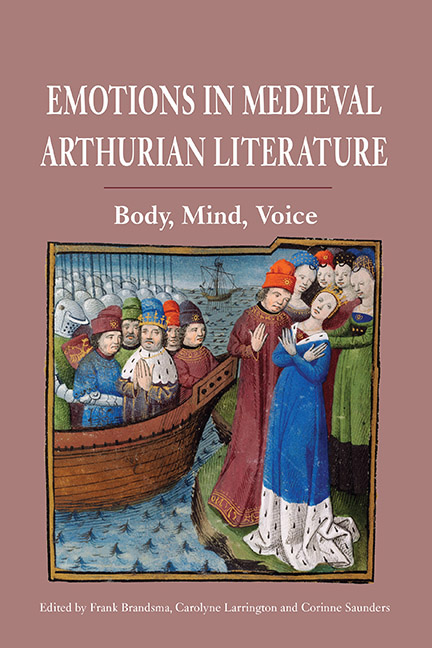Afterword: Malory’s Enigmatic Smiles
Published online by Cambridge University Press: 21 May 2021
Summary
What happens when an emotion is unreadable? This book gives a full account of how emotions work in the mind and the body, according to both medieval and modern theories (Introduction, Saunders); how they function within a society or a group, notably that of the Round Table, or of the audience and readers of Arthurian literature (Gilbert, Lynch, Radulescu); the disjunction between emotion and effective action (Lynch); the mechanisms by which the emotions of a fictional character can be mirrored in a reader (Larrington); the capacity of sounds – even sounds with no semantic content – to convey feeling (Brandsma); and whether (or how far) emotions can be transferred across cultures (Rikhardsdottir). Their overlap and intersection with other schemata, of the passions or the vices, are discussed, along with the specific terms used to describe fear or anger or shame (Fuksas). The bodily expressions most commonly attached to specific emotions are explored, of going pale or red, changing expression, flinching or weeping. Medieval authors will typically portray emotions so as to suggest some kind of social function for their readers: how a king, or a knight, should act as well as feel. The model underlying all of these is the assumption that emotions are communicated socially. Even if the character feeling the emotion keeps it to him- or herself, the reader is granted privileged access to their unexpressed thoughts or feelings. Kings may be under an obligation not to be too open about their emotions (Baden-Daintree), but the readers will be shown what they feel; lovers may blush in public before retreating to their chamber or some other isolated spot to lament their state, as an abundance of Arthurian and other romances demonstrate, but the symptoms will be thoroughly familiar to readers trained to recognize them. But what happens when a bodily sign of emotion carries neither a familiar meaning nor an explanation within the text?
Sir Thomas Malory can be a particularly challenging, or imaginatively engaging, author in this respect. Of all Arthurian writers, Malory is one of the least forthcoming about expressions of emotion, not least in comparison with the abundance found in his French sources. Many of the emotions he does describe, or their outward expressions (kneeling, weeping, drawing a sword), carry their meanings with them in all the ways this book has discussed.
- Type
- Chapter
- Information
- Emotions in Medieval Arthurian LiteratureBody, Mind, Voice, pp. 181 - 188Publisher: Boydell & BrewerPrint publication year: 2015



